

San Antonio’s City Hall building was built in 1889, making it one of the nation’s oldest public buildings still in use. It was recently renovated to better serve the employees of the City of San Antonio. The changes brought some much-needed modernization and accessibility to the building while still preserving its history.
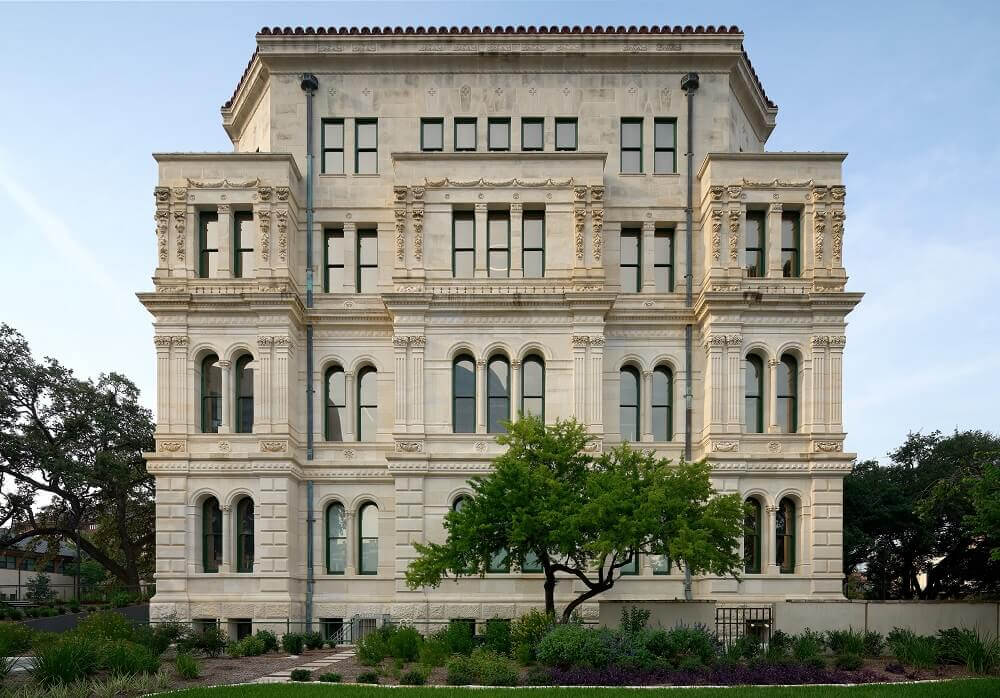
The project architects at FPC uncovered a series of niches in the walls while conducting some exploratory demolition. These niches then became the perfect opportunity for artwork, making it one of the newest public art installations curated by the City of San Antonio Department of Arts & Culture. The artists were commissioned to fill three niches each (in a triptych format) with their artwork that they felt best represented San Antonio.
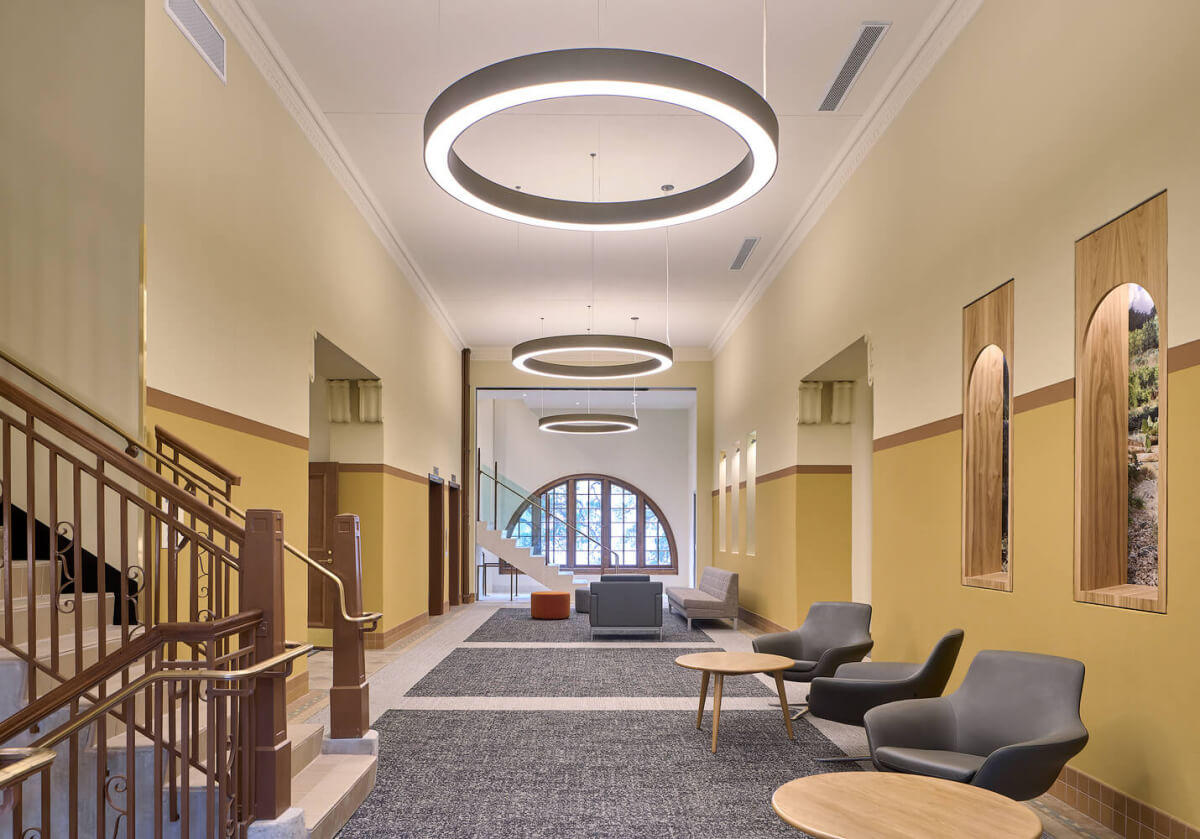
In a statement by CoSA,
“A highlight of this project is six new public art installations by local artists, which explore San Antonio’s past, present, and future while also portraying its geography, ecology, economy, and culture.”
The art niches are located on the second, third, and fourth floors at City Hall.
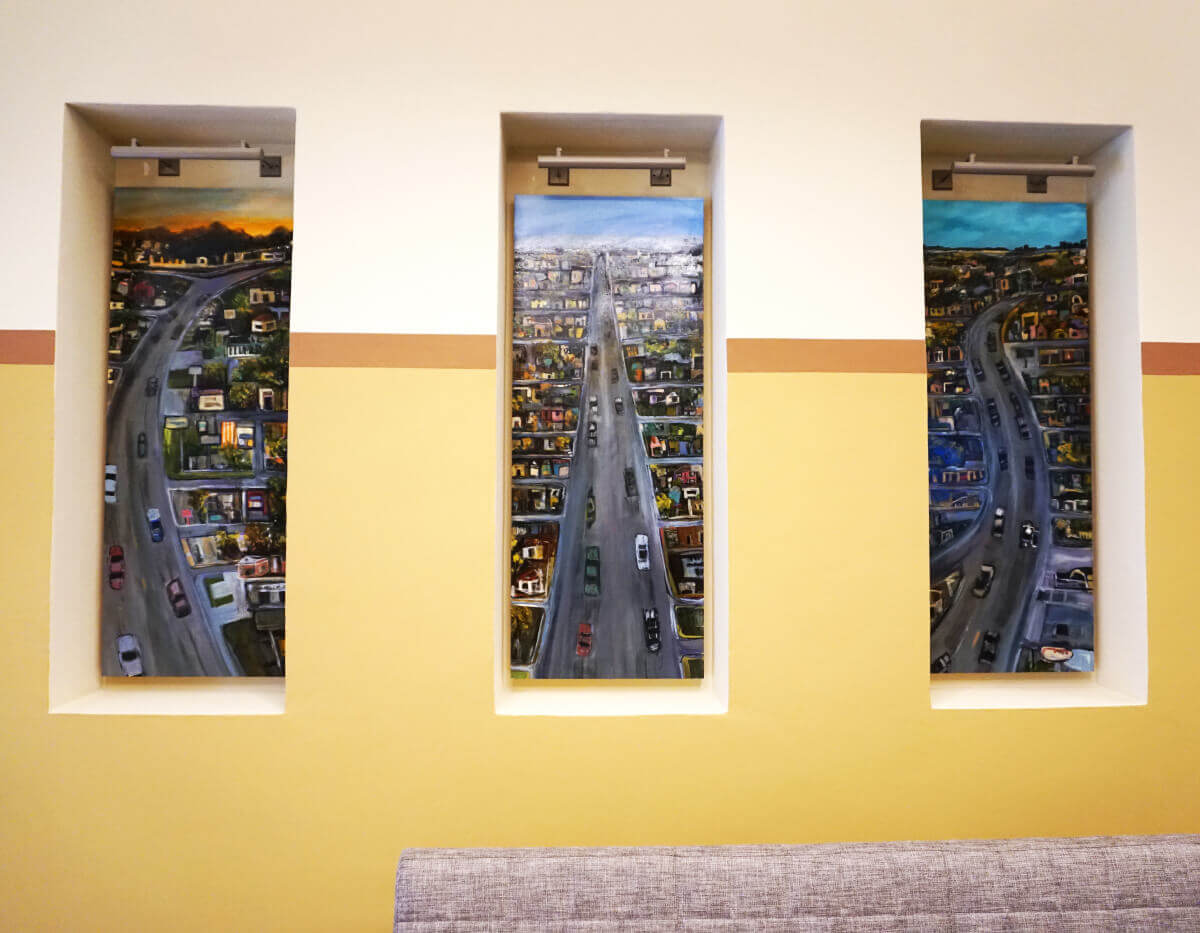
Beginning with the second floor, artist Ana Fernandez portrayed three iconic roads in San Antonio: Austin Highway, Culebra Road, and Fredericksburg Road. The series is entitled, “Three Streets” and depicts an aerial view (as the drone flies) of each stretch of road. Each street represents a thoroughfare that she has traversed at various points in her life while growing up and living in San Antonio. Each street has a very unique character and brings the artist a sense of nostalgia. You can watch the artist’s commentary here.
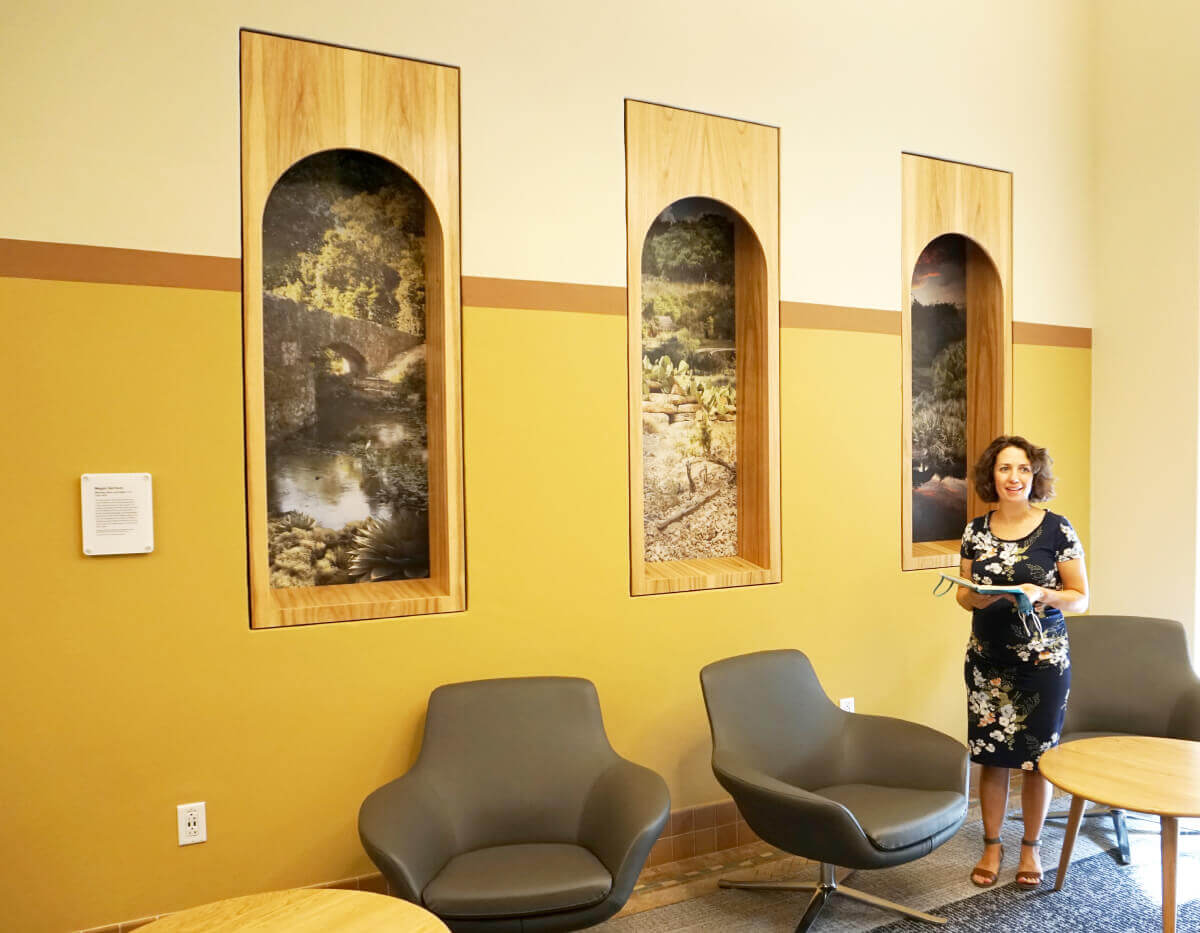
On the second floor, Megan Harrison’s works are a photographic collage of various features (both geological and built) in San Antonio's open areas and parks. The series is entitled, “Morning, Noon, and Night” as they show 3 nature scenes at different times of the day. You can watch the artist’s commentary here.
On the third floor are the works of Raul Rene Gonzalez and Ruth Leonela Buentello.
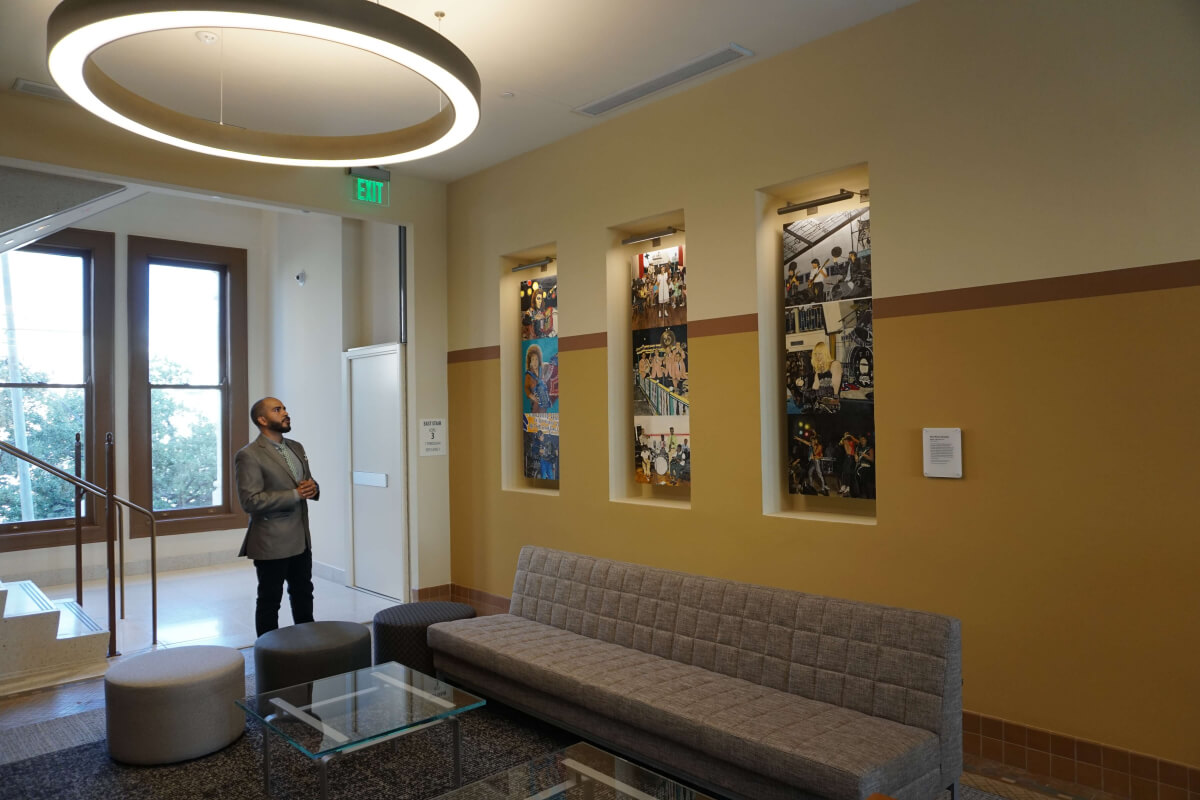
“Music in the City” by Raul Rene Gonzalez depicts the diverse musical landscape of San Antonio. The paintings are inspired by moments that the artist found on photographs while he was researching the history of the San Antonio music scene and include imagery of Heavy Metal, Jazz, Tejano, and Conjunto performances.
You can watch the artist’s commentary here.
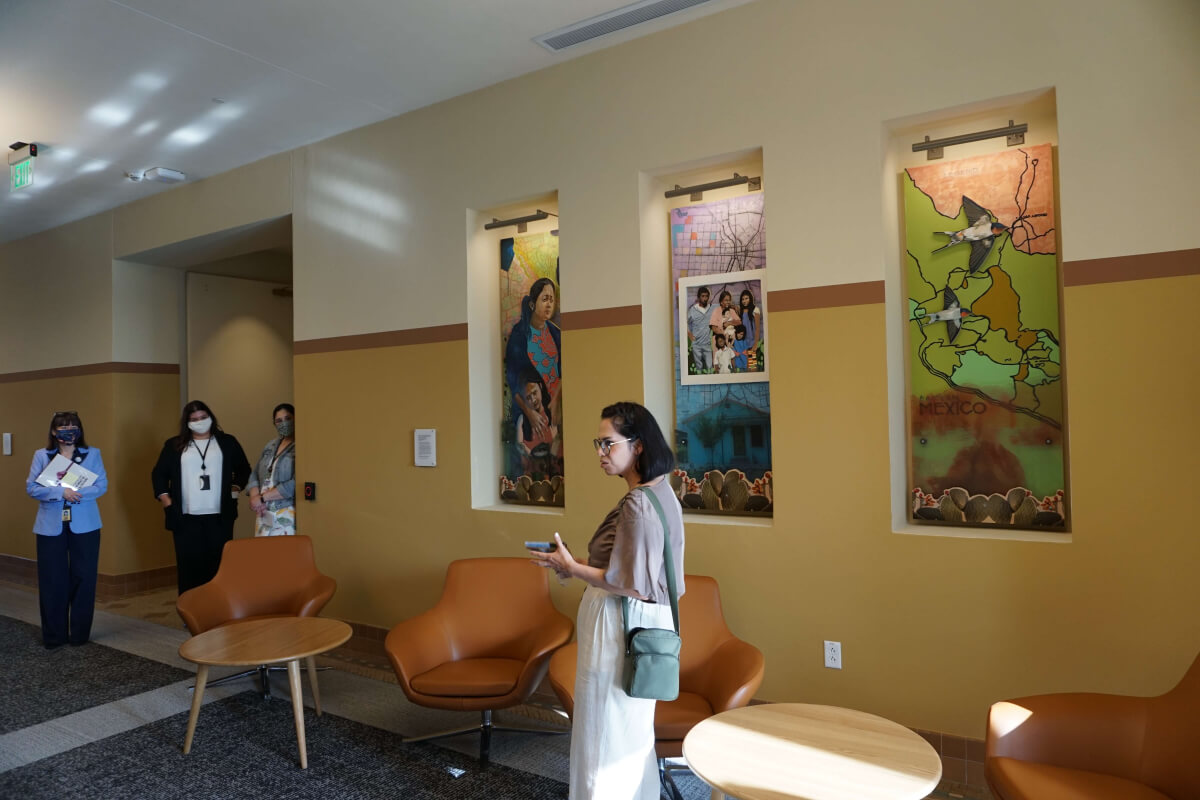
“Entre Fronteras Memory Migration Maps” are mixed media pieces by Ruth Leonela Buentello that tell the story of her family’s migration from Mexico to the West Side of San Antonio. As stated on the Get Creative San Antonio website,
“This artwork also focuses on the stories of three generations of women and uses family photos as well as symbols like las golondrinas (swallows), prickly pear cactus, and constellations in the night sky to show a borderless world where thousands of families have migrated along a similar path.”
You can watch the artist’s commentary here.
On the fourth floor are works by Mari Hernandez and Emily Fleisher.
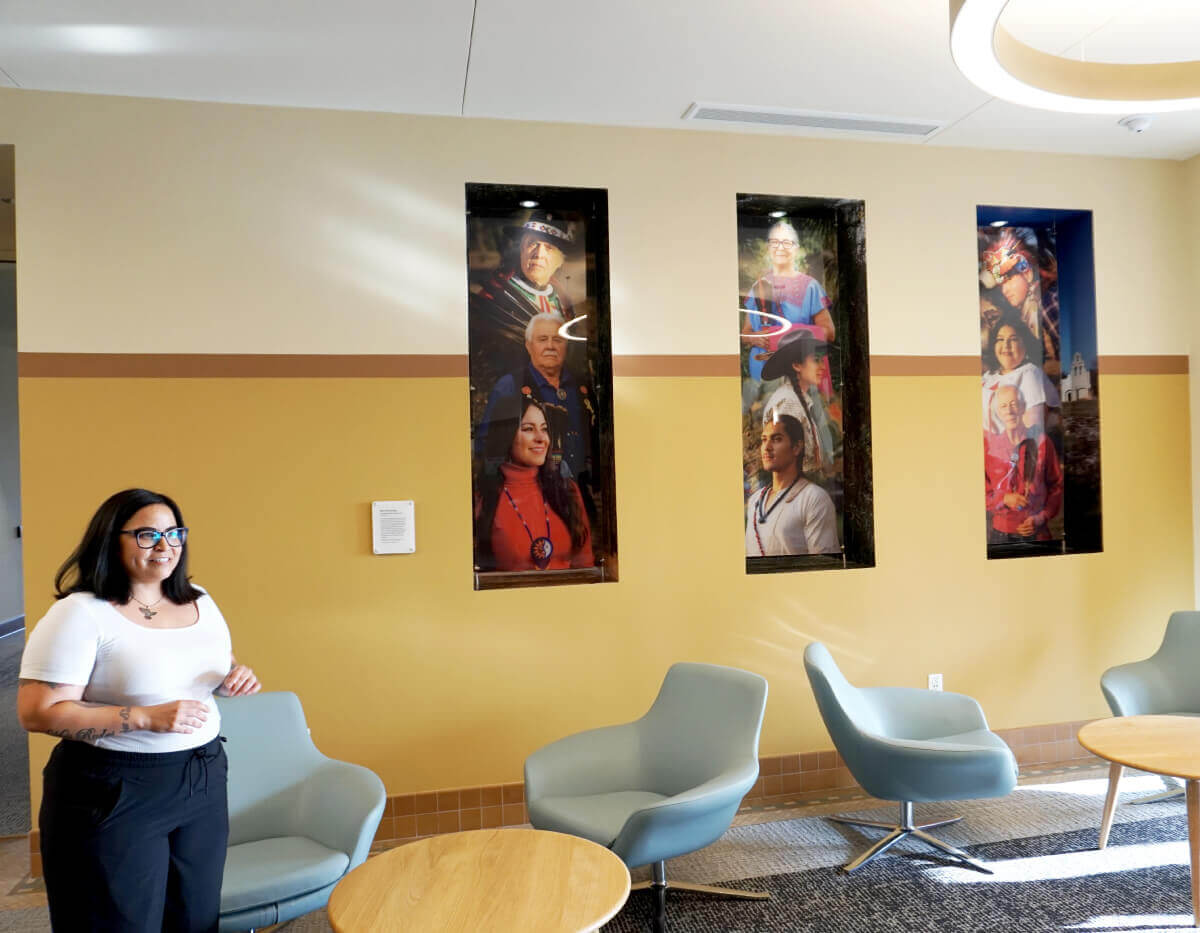
Mari Hernandez, as a photographer, chose to take a series of portraits of our region’s First People. The portrait subjects are the lineal descendants of those who once resided in the San Antonio Missions. The series is entitled, “Tāp Pīlam Nation Portraits” and the images give respect to the generations that came before while acknowledging how their descendants are still contributing to the fabric of our city to this day. We especially love how the artist chose to utilize each surface of the niche which adds even more depth to their stories. You can watch the artist’s commentary here.
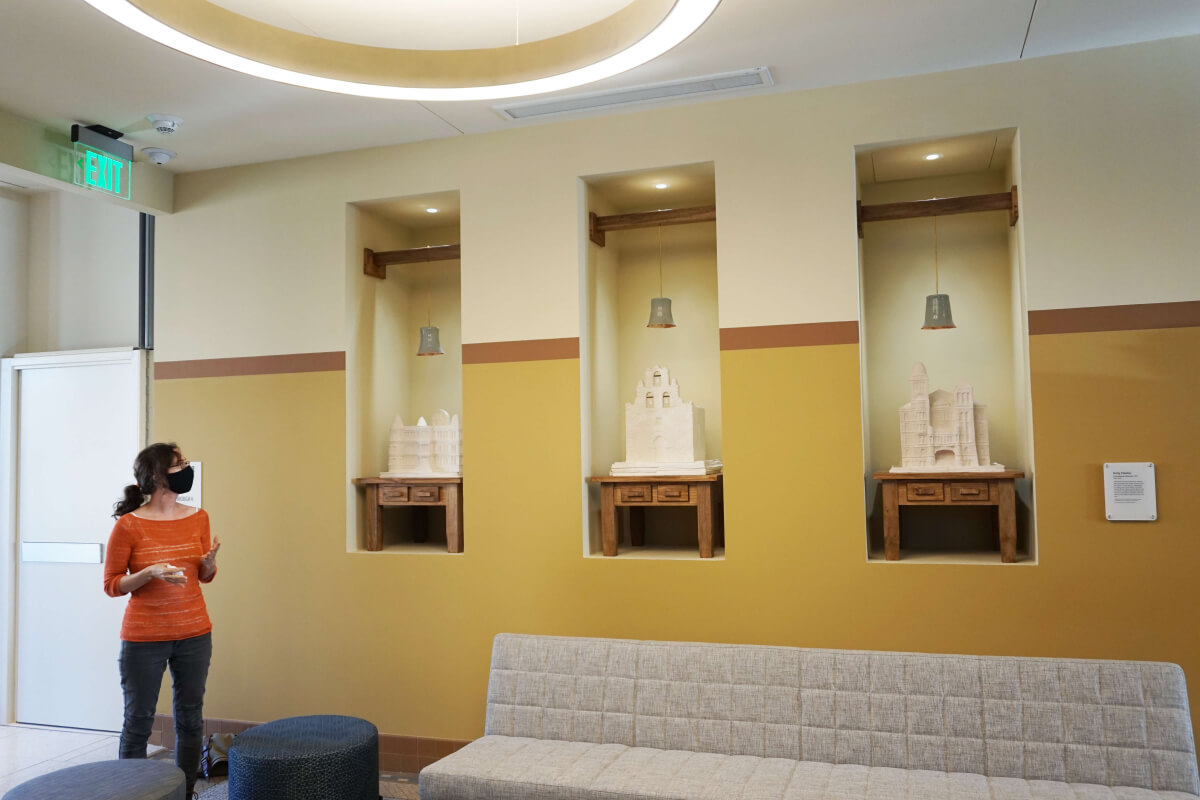
Emily Fleisher’s work at City Hall is entitled, “Foundational Elements.” Reflecting upon the nature of place, the artist chose to create sculptures depicting various important historic public structures in San Antonio that played a role in laying the foundation of our city, while sitting upon a stack of paperwork. The sculptures were then placed upon a custom wood desk representing the work taking place in City Hall by their employees. The glass lighting in each niche is also significant as they mimic the bell towers of Mission San Juan and Mission Espada. You can watch the artist’s commentary here.
We are told that each installation is permanent and will serve as a beautiful way to inform and educate current and future San Antonio residents about our history. At this time, the artwork can only be viewed by appointment if you are meeting with a city official.